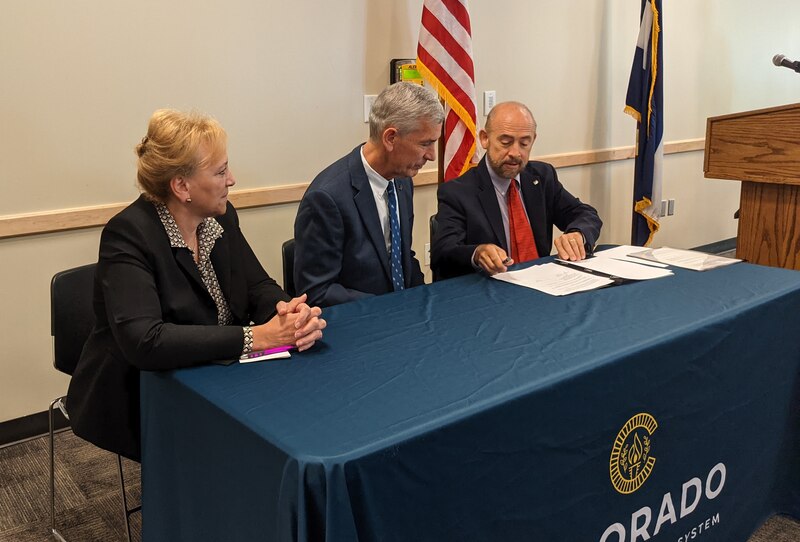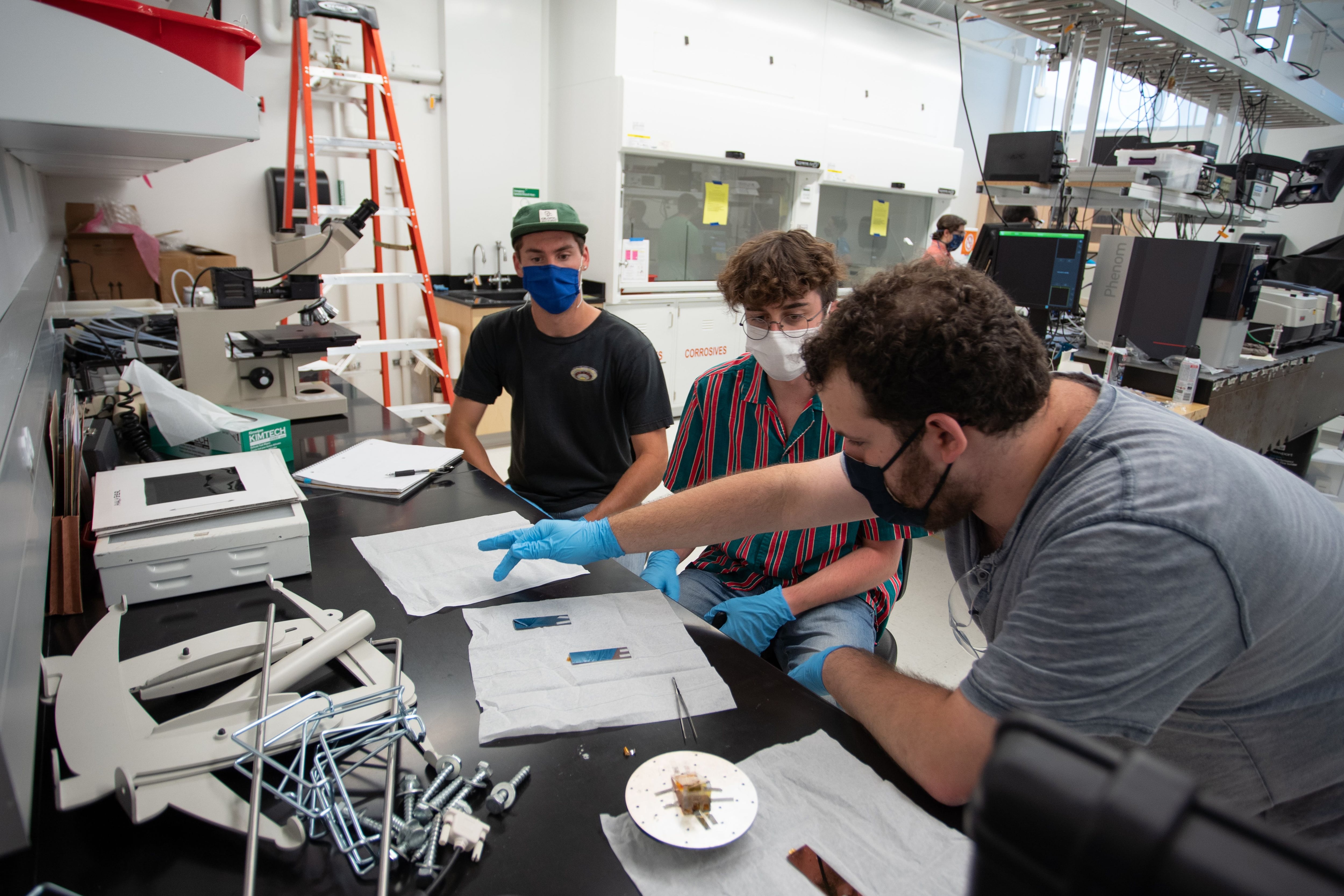A new partnership at the state’s community colleges aims to make it easier for students to transfer to the Colorado School of Mines, the state’s most selective public four-year university, by aligning academic requirements and classwork.
State leaders hope the partnership announced on Tuesday will promote a more diverse pool of students to enroll at Mines or become interested in science and engineering fields.
Joe Garcia, Colorado Community College System chancellor, said many community college students don’t view attending a two-year college as a viable option if they want to go on to an elite school. The Colorado School of Mines in Golden enrolls about 50% of all applicants and heavily focuses on science and engineering degrees, especially in fields that specialize in geology, energy, and the environment.
“Now, the School of Mines is saying we want your successful graduates,” Garcia said. “It’s an important message for those students.”
Garcia said he wants the program to become a model for other four-year universities to make it easier for community college students to continue their education.
Before the agreement, students might have been interested in Mines but not taken the necessary classes, costing them time and money.
The agreement between the community college system and Mines will ensure students graduate with an associate degree that aligns with the education needed for a Mines degree. Those classes will focus heavily on math that’s not usually required at many universities.
The program won’t guarantee students will secure a spot at the university. But Mines admissions officers will be able to see that those students graduating from a partnership program have the necessary skills to succeed. Students will also know they’re taking a set of courses that will transfer over to a Mines bachelor’s degree.
“They’re checking all the boxes, right?” said Lori Kester, Mines associate provost of enrollment management. “The students have done the work. We know they’re ready to come [to Mines] and they’re going to be successful.”
The partnership will encourage older students, as well as a more racially diverse range of students, to apply to Mines. The Colorado Community College System educates more than 130,000 students, many who face steeper financial hurdles and are typically older and more diverse than those at the state’s four-year institutions.
Colorado School of Mines President Paul Johnson said the partnership helps the school fulfill its mission to provide opportunity for Colorado students from all backgrounds.

The school enrolled about 5,000 undergraduate students in the 2019-20 school year, according to recent data. Students at the school are primarily white and under the age of 24. About 15% of all undergraduates receive Pell grants, which signifies whether a student has a financial need. In Colorado, about 2 out of every 5 students are considered low income.
“Our goal is that our campus reflects the makeup of the state, from income demographics to any other demographic,” Johnson said.
Johnson said the types of students community colleges educate can benefit the most from a Mines degree, which can carry with it the potential of a high paying job in in-demand industries. Even if those students don’t end up attending Mines, Garcia said, the associate degree will still open up the possibility for those students to get high paying jobs in engineering and science fields.
For the state, it’s an economic imperative, Johnson said. And industries are demanding more graduates from diverse backgrounds.
“We’ve got to create these pathways for all students to have the opportunities because it’s not just us who are saying this,” he said. “It’s society. It’s the industries.”
Front Range Community College student Adeena Chughtai, 25, said she’s excited about the possibility of enrolling at Mines next spring thanks to this program. Chughtai started college at the University of Colorado Boulder after high school but struggled. She took time off from school and then restarted her college journey at Front Range several years ago.
The time at community college allowed her to learn at her own pace in a smaller environment. It also helped her realize she wanted to become a biomedical engineer.
But as an older student, transferring to certain four-year universities — and especially Mines — can feel like an impossible task, she said.
“But knowing that the pathway is open and not something that is shut down because you’re not 18 is just fantastic,” Chughtai said.








